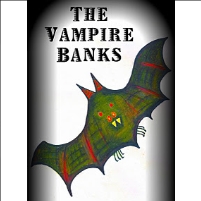Big Banks Take Aim at Low-Income Americans with Hidden Fees
Friday, April 27, 2012
 (graphic: Jane Air)
(graphic: Jane Air)
Restricted from gouging many of its middle-class customers because of the Dodd-Frank financial reform law, banks have focused on hitting low-income Americans with new, exorbitant fees.
Financial institutions are taking advantage of customers who desperately need money or financing. Small short-term loans, such as $1,000, can come with $100 in fees to start. Extra costs can pile on if the borrower falls behind on paying back the loan. One reason is that the banks automatically debit the client’s account each month. If there is not enough in the account to cover the withdrawal, overdraft fees kick in, as do high interest charges.
Another popular product is pre-paid credit cards, which come with user fees. For example, U.S. Bank charges $3 to enroll, $3 each month, $3 to visit a bank teller and $15 to replace a lost card. Wells Fargo charges $1 to speak to a customer service agent more than twice a month.
Some of the institutions targeting low-income consumers include U.S. Bank, Regions Financial and Wells Fargo.
The Consumer Financial Protection Bureau is reportedly examining these practices to determine if banks have violated the law.
Banks are reaching out to what Jessica Silver-Greenberg and Ben Protess of The New York Times say is known as the “unbanked or underbanked population,” representing about 30 million households, which the banks consider to be an untapped $45 billion market.
-David Wallechinsky, Noel Brinkerhoff
To Learn More:
Chasing Fees, Banks Court Low-Income Customers (by Jessica Silver-Greenberg and Ben Protess, New York Times)
Banks Quietly Adding New Fees (by Noel Brinkerhoff, AllGov)
- Top Stories
- Unusual News
- Where is the Money Going?
- Controversies
- U.S. and the World
- Appointments and Resignations
- Latest News
- Trump to Stop Deportations If…
- Trump Denounces World Series
- What If China Invaded the United States?
- Donald Trump Has a Mental Health Problem and It Has a Name
- Trump Goes on Renaming Frenzy






Comments